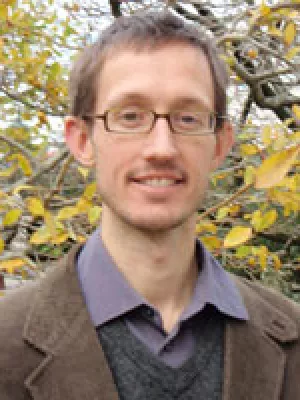
Martijn van Praagh
Adjunct senior lecturer

On leachate emissions from municipal solid waste
Author
Summary, in English
A combination of different lab-scale experimental setups and analytical approaches are utilized in this work. The characterization of emission potentials is undertaken by analyzing total contents, the waste material's dielectric permittivity and the mineral phases of fresh and leached wastes. This is accompanied by testing their susceptibility for degradation with the aid of respiration activity and gas formation potential tests. Actual emissions are assessed by measuring ions of soluble salts, metals, and potentially oxygen depleting substances in the leachate emitted from granular waste materials leached with water. In order to verify the interconnection of parameters for determining emissions and those determining emission potentials, multivariate statistical analyses are used.
Organic material plays an important role for leachate emissions from pretreated wastes. On the one hand, heavy metals might be bound to solid humic material to a higher extent after pretreatment. On the other hand, they might be mobilized with organic matter transported in the leachate even after pretreatment. Total organic carbon content of waste, a limit value employed in Sweden for diverting waste from landfills, proves to be less accurate in defining reduced emission potential by pretreatment than degradation tests, or analyzing the properties of organic carbon left in the solid.
In standard laboratory percolation tests, which are used to describe emissions caused by moving water, the contact between solution and solute, measured as liquid to solid ratio, is artificially enhanced and accelerated. This modification is employed in order to resemble a worst case scenario within a limited time frame for the experiments. Up till now, neither the intensity of this contact nor the pore water velocity are tested nor controlled. The reaction of water with the solid waste and pore heterogeneities adds to the unreliability of translating liquid to solid ratios from the laboratory to field situations. The former issues can have a large impact on emissions and remaining emission potentials of wastes. By introducing an electromagnetic measuring technique, called Time Domain Reflectometry (TDR), into a column percolation test, monitoring the movement of water and solutes through wastes can be achieved. The effect of mean travel time on liquid emissions outweighs the importance of introducing a potentially mobilizing leaching agent, in this case dissolved organic carbon. Inorganic material and the supersaturation of calcite are identified as issues which deserve more attention in future work for assessing emissions and emission potentials regarding heavy metals from pretreated, granular wastes.
Characterization of granular wastes by means of percolation tests in combination with chemical speciation modelling, monitoring of solution and solute, and evaluating the data with advanced statistical tools can enhance information on how potential emissions from waste change when alternative management options are chosen. Specific landfill scenarios with reduced liquid emissions and reduced emission potential can be developed. In the case of an air pollution control residue from waste incineration, forced leaching until a liquid to solid ratio of 2 with subsequent tight capping is suggested as a landfill scenario with minimum remaining emission potential in the long term.
The performance of mitigation measures such as leachate treatment is ideally taken into regard, when environmental impacts of waste management options are elucidated. The severity of environmental impacts of pretreated wastes depends also on their final use and location, and the recipient's susceptibility for its emissions, as shown for a recovered refuse material in this work.
Department/s
- Division of Water Resources Engineering
Publishing year
2007
Language
English
Document type
Dissertation
Publisher
Water Resources Engineering, Lund University
Topic
- Water Engineering
Keywords
- Hydrogeology
- Miljöstudier
- Environmental studies
- Environmental Impact
- heavy metals
- Organic carbon
- teknisk geologi
- Hydrogeologi
- geographical and geological engineering
- teknisk geografi
Status
Published
Supervisor
- Persson, K. M. Persson, K. M.
ISBN/ISSN/Other
- ISBN: 978-91-628-7344-8
Defence date
7 December 2007
Defence time
09:15
Defence place
Lund Tekniska Högskola, Sölvegatan 26, Ingvar Kamprad Designcentrum, Lund, stora hörsalen (DC:Shö)
Opponent
- Anders Lagerkvist (Professor)